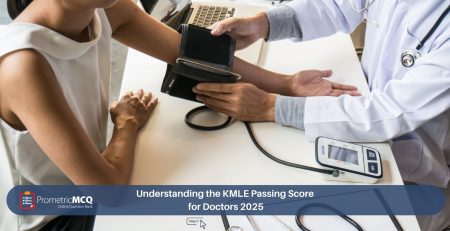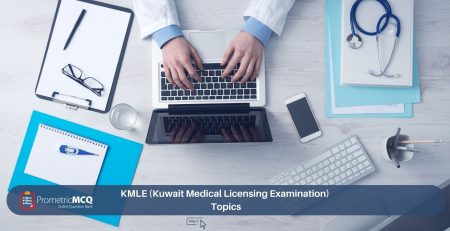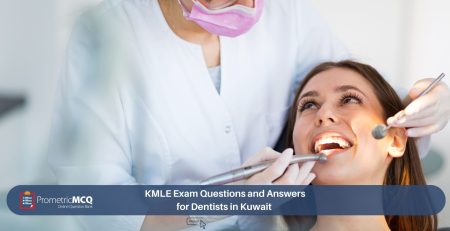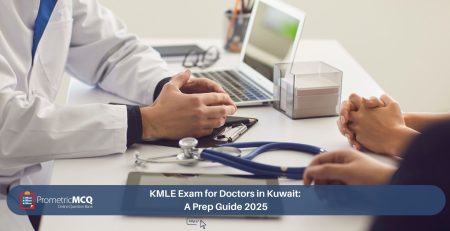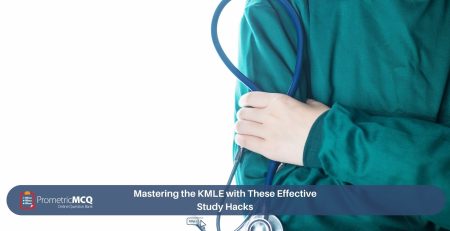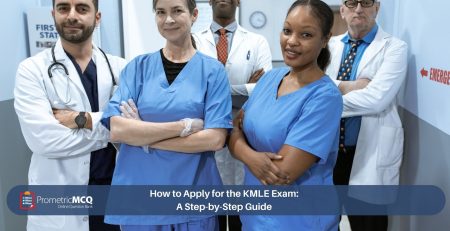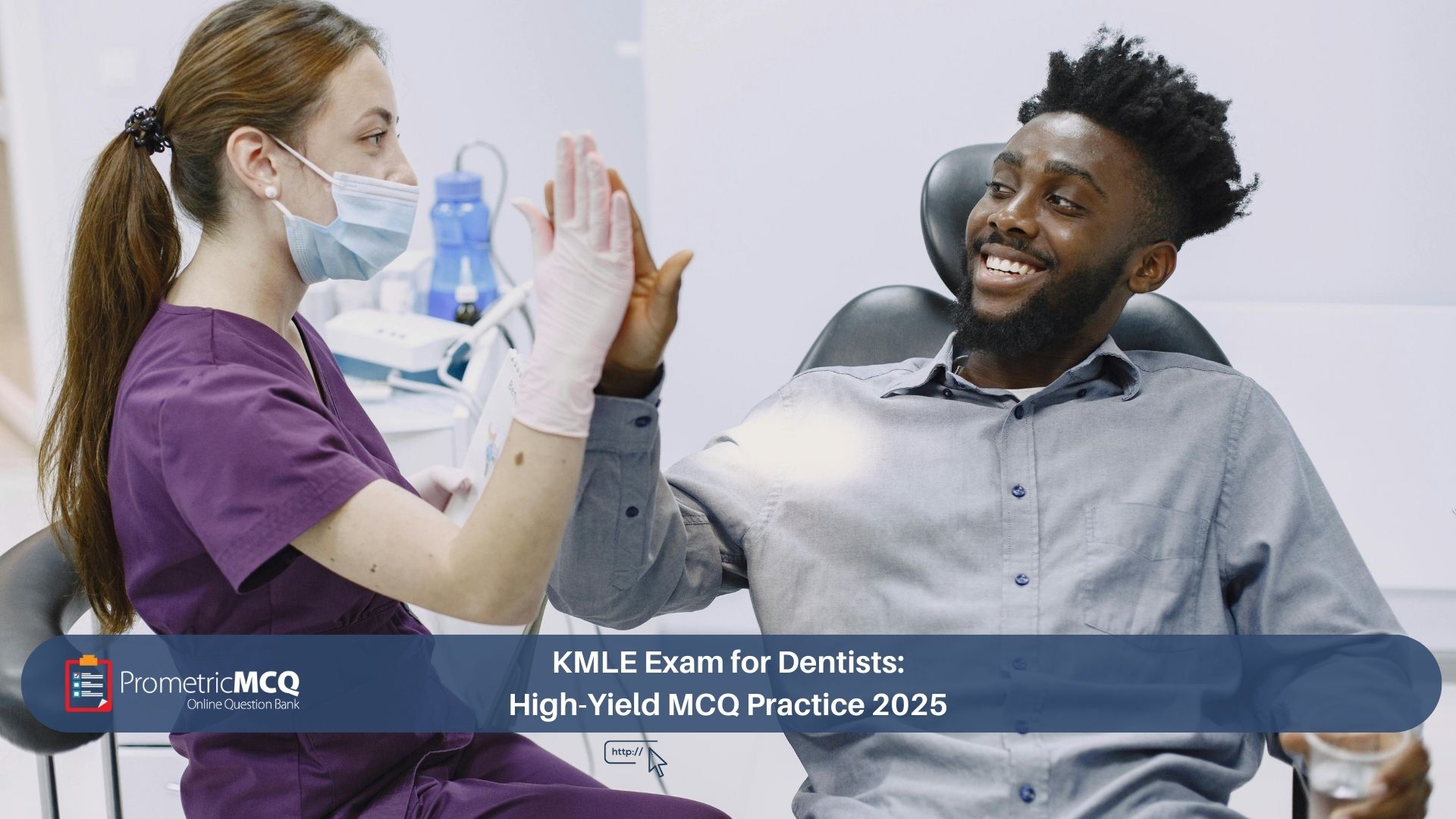
KMLE Exam for Dentists: High-Yield MCQ Practice 2025
fatima@prometricmcq.com2025-09-24T14:26:35+00:00Table of Contents
ToggleKMLE Exam for Dentists: High-Yield MCQ Practice 2025
For dentists worldwide, Kuwait’s sophisticated and rapidly expanding healthcare sector presents a compelling career destination. The opportunity to work with advanced technology in a multicultural setting is a significant draw. However, entry into this prestigious field is governed by a rigorous standard of professional excellence, embodied by the Kuwait Medical Licensing Examination (KMLE) for Dentists. This examination, administered by the Ministry of Health, is the critical checkpoint ensuring every practitioner meets the high standards of clinical competency and patient care expected in the country.
The KMLE is far more than a test of academic recall. It is a comprehensive assessment of a dentist’s clinical judgment, diagnostic acumen, and ability to formulate sound, evidence-based treatment plans. The exam’s format, composed entirely of Multiple-Choice Questions (MCQs) based on clinical vignettes, demands a specific and strategic approach to preparation. Success is not achieved by passively reading textbooks, but by actively engaging with exam-style questions that sharpen your analytical and decision-making skills.
This ultimate 2025 guide is engineered to be your definitive resource for mastering the KMLE Dental Exam. We will provide an in-depth analysis of the exam’s structure, a detailed breakdown of high-yield syllabus topics, and, most importantly, a robust set of practice MCQs with exhaustive, evidence-based rationales. This guide, complete with a 10-point FAQ, will equip you with the knowledge, strategy, and confidence needed to excel on exam day and launch your dental career in Kuwait.
Key Takeaways for KMLE Dental Exam Success
- Diagnosis and Treatment Planning are King: The majority of questions will test your ability to diagnose a condition from a clinical scenario and select the most appropriate treatment plan.
- Master Radiographic Interpretation: Proficiency in reading and interpreting dental radiographs (periapicals, OPGs, bitewings) is absolutely essential.
- Know Your Dental Materials: A deep understanding of the properties, indications, and manipulation of common dental materials is a frequently tested, high-yield area.
- Oral Pathology is a Core Topic: Be prepared to identify common oral lesions and differentiate between benign, pre-malignant, and malignant conditions.
- MCQ Practice is Non-Negotiable: The only way to master the exam’s format and develop the necessary speed and accuracy is through consistent practice with a high-quality question bank.
Deconstructing the 2025 KMLE Dental Exam Pattern
A strategic approach begins with a clear understanding of the exam’s architecture. The KMLE for Dentists is administered by Prometric and adheres to international standards for high-stakes medical testing. Our general guide to passing the KMLE dental exam provides a great starting point for the overall process.
1. Test Format and Structure
The exam is a Computer-Based Test (CBT) consisting of 150 MCQs. Candidates are given 3 hours (180 minutes) to complete the test. This allows an average of 1 minute and 12 seconds per question, which requires a focused and efficient approach to time management.
2. Scoring and Outcome
The result is a simple Pass or Fail. The Ministry of Health does not provide a numerical score. The unofficial passing threshold is widely understood to be in the range of 60-65%. There is no negative marking, so it is imperative that you answer every single question.
3. Question Style: The Clinical Vignette
The vast majority of questions are presented as clinical scenarios. You will be given a patient’s age, chief complaint, medical/dental history, clinical findings, and often a radiograph or clinical image. Your task is to analyze this information and select the single best answer from four options.
High-Yield Syllabus Domains for the KMLE Dental Exam
While a general dentist must be knowledgeable in all areas, the KMLE places a stronger emphasis on certain core domains. Your study plan should reflect this weighting to maximize efficiency.
| Core Dental Domain | High-Yield Topics and Key Concepts for 2025 |
|---|---|
| Operative Dentistry & Cariology | Modern concepts of caries diagnosis (ICDAS), principles of minimally invasive cavity preparation, properties and application of dental materials (composites, amalgams, glass ionomers, bonding agents), and management of dentin hypersensitivity. |
| Endodontics | Diagnosis of pulpal and periapical pathology, root canal anatomy, principles of access cavity preparation, cleaning, shaping, and obturation techniques. Management of endodontic emergencies and traumatic dental injuries is also a key area. |
| Prosthodontics | Principles of tooth preparation for crowns and bridges, impression materials and techniques, concepts of occlusion, design of removable partial dentures, and fundamentals of complete dentures. Basic implant prosthodontics is also frequently tested. |
| Oral Surgery & Local Anesthesia | Principles of exodontia, management of impacted teeth (especially third molars), management of common post-operative complications (e.g., dry socket). A deep knowledge of local anesthetic agents, techniques, and management of complications is critical. |
| Oral Pathology & Medicine | This is a very high-yield area. Diagnosis of common oral mucosal lesions (aphthous ulcers, lichen planus, candidiasis), differentiation of cysts and tumors, recognition of pre-malignant lesions (leukoplakia, erythroplakia), and oral manifestations of systemic diseases. |
| Periodontics | Classification and diagnosis of periodontal diseases, non-surgical and surgical periodontal therapy, principles of bone grafting and guided tissue regeneration, and the systemic impact of periodontal disease. |
| Pediatric Dentistry & Orthodontics | Management of caries in primary teeth, pulp therapy for primary teeth (pulpotomy), space management, and recognizing developmental anomalies. For orthodontics, focus on Angle’s classification and identifying the need for referral. |
High-Yield KMLE Dental MCQ Practice
The following questions are designed to simulate the difficulty and style of the real exam. Attempt each question before reading the rationale to truly test your knowledge. For a more exhaustive preparation, using a dedicated bank of dentistry MCQs is the most effective strategy.
Question 1: Oral Pathology
A 60-year-old male who is a heavy smoker and drinker presents for a routine check-up. You observe a persistent, painless white patch on the lateral border of his tongue that cannot be wiped off. The lesion has been present for over 4 months. What is the most appropriate next step in management?
- Prescribe a topical antifungal agent.
- Advise the patient to stop smoking and review in 2 weeks.
- Perform an incisional biopsy of the lesion.
- Reassure the patient that it is likely a frictional keratosis.
Correct Answer: C
Rationale: This clinical presentation is highly suggestive of leukoplakia, which is a pre-malignant lesion. Given the high-risk factors (smoking, alcohol) and the high-risk location (lateral border of the tongue), there is a significant risk of dysplasia or squamous cell carcinoma. The definitive standard of care is to obtain a tissue sample via an incisional biopsy for histopathological examination to rule out malignancy.
Distractors:
A: Antifungals are for candidiasis, which can typically be wiped off.
B: While smoking cessation is crucial advice, waiting 2 weeks for a potentially malignant lesion is inappropriate and delays diagnosis.
D: While it could be frictional keratosis, this is a diagnosis of exclusion. You cannot assume it is benign without a biopsy, especially with the patient’s risk factors.
Question 2: Endodontics
A patient presents with a severe, spontaneous, throbbing pain in the mandibular right first molar. The pain worsens with hot stimuli and is relieved by cold water. The tooth is tender to percussion. A periapical radiograph shows a deep carious lesion but no periapical radiolucency. What is the most likely diagnosis?
- Reversible pulpitis
- Symptomatic irreversible pulpitis
- Pulp necrosis
- Acute apical periodontitis
Correct Answer: B
Rationale: The classic signs of symptomatic irreversible pulpitis are present: spontaneous pain, throbbing character, and lingering pain with thermal stimuli (especially heat). The relief with cold is caused by the cold liquid causing a temporary constriction of the inflamed, vasodilated pulpal blood vessels. The tenderness to percussion indicates that the inflammation is beginning to extend into the periapical tissues, but the primary diagnosis for the pulp is irreversible pulpitis.
Distractors:
A: Reversible pulpitis is characterized by sharp, non-lingering pain to stimuli, not spontaneous throbbing pain.
C: Pulp necrosis implies a non-vital pulp, which would not respond to thermal stimuli (or would have no relief with cold).
D: Acute apical periodontitis describes the inflammation of the apical tissues (hence the tenderness to percussion) but is a consequence of the pulpal diagnosis, not the diagnosis of the pulp itself.
Question 3: Prosthodontics & Dental Materials
When preparing a tooth for a full ceramic crown (e.g., E-max), which of the following design features is most critical to prevent fracture of the restoration?
- A deep chamfer or knife-edge margin
- At least 2 mm of occlusal reduction
- Sharp internal line angles
- Minimal axial wall taper
Correct Answer: B
Rationale: All-ceramic restorations are strong in compression but weak under tension and are susceptible to fracture if they are too thin. Providing adequate occlusal reduction (typically 1.5-2 mm) is the single most important factor to ensure sufficient bulk of ceramic material in the high-stress occlusal area. This bulk allows the restoration to resist fracture under functional loading.
Distractors:
A: A chamfer or shoulder margin is required, but a knife-edge margin is contraindicated as it would result in a thin, fragile ceramic margin.
C: Sharp internal line angles are a major cause of stress concentration in ceramics and must be rounded to prevent fracture.
D: Minimal taper is important for retention, but it is not the primary factor in preventing material fracture.
Frequently Asked Questions (FAQs) for the KMLE Dental Exam
The exam is graded as Pass/Fail, and the Kuwait MOH does not disclose the exact passing percentage. However, the accepted unofficial standard for dentists is around 60-65%. To be safe, your goal in practice should be to consistently score above 70-75%.
The core clinical content and format are very similar across all Gulf Cooperation Council (GCC) licensing exams. They are all competency-based, MCQ-format tests administered by Prometric. If you are well-prepared for one, you are generally well-prepared for the others. The primary difference might be minor variations in the distribution of topics. A good overview can be found by comparing it to the general Prometric dental licensing exam framework.
Yes, extremely important. The KMLE is based on international, evidence-based standards of dental care. Your knowledge should be current and align with guidelines from major global authorities like the American Dental Association (ADA) and the FDI World Dental Federation. You can review many clinical summaries and guidelines on the ADA’s Oral Health Topics page.
No. The exam will always use generic names for both materials and pharmaceuticals. For example, you need to know the properties of “polyvinyl siloxane impression material,” not a brand name like “Aquasil.” Similarly, you’ll see “lidocaine,” not “Xylocaine.”
PSV is a mandatory step where the DataFlow Group independently verifies your credentials (dental degree, license, experience letters) directly with the issuing institutions. This process is required by the MOH to ensure all documents are authentic and must be completed with a positive report before your license can be issued.
Candidates are typically allowed a total of three attempts to pass the KMLE. There is usually a waiting period between attempts. Failing requires a serious re-evaluation of your study methods, with a much stronger focus on active learning through question banks.
While a good QBank will have many questions with radiographs, supplementing your study with a dedicated oral radiology atlas or textbook (like White and Pharoah’s “Oral Radiology”) is highly recommended. Practice identifying normal anatomy, common pathologies, and radiographic errors until it becomes second nature.
Yes. As a licensed dentist, you are expected to be competent in managing common medical emergencies that can occur in the dental chair, such as syncope, hypoglycemia, anaphylaxis, and angina. This is a high-yield topic for patient safety.
The most effective strategy is a two-phase approach. Phase one involves a quick review of your foundational knowledge using condensed notes or review books. Phase two, which should constitute at least 70-80% of your total study time, must be dedicated to solving and reviewing thousands of MCQs from a high-quality, specialized QBank.
Yes, typically all foreign-trained dentists, regardless of specialty, must first pass the General Dentist KMLE to become licensed. After obtaining the general license and working in Kuwait, you may then be able to apply and sit for a separate specialist examination to have your specialty recognized.
Conclusion: Your Blueprint for a Dental Career in Kuwait
The KMLE Dental Exam is a formidable challenge, but it is a predictable one. It is designed to test the core competencies that define a safe and effective general dentist. By understanding the exam’s pattern, focusing your energy on the high-yield syllabus domains, and committing to a rigorous preparation strategy centered on active MCQ practice, you can systematically build the knowledge and confidence required to succeed. Mastering the content in this guide is your first step towards passing the KMLE and embarking on a successful and rewarding dental career in Kuwait.
Ready to Transform Practice into Perfection?
Our comprehensive QBank for the KMLE Dental Exam is filled with thousands of realistic clinical scenarios, detailed, evidence-based rationales, and simulated exams designed to cover the entire syllabus and ensure you pass with confidence on your first attempt.

